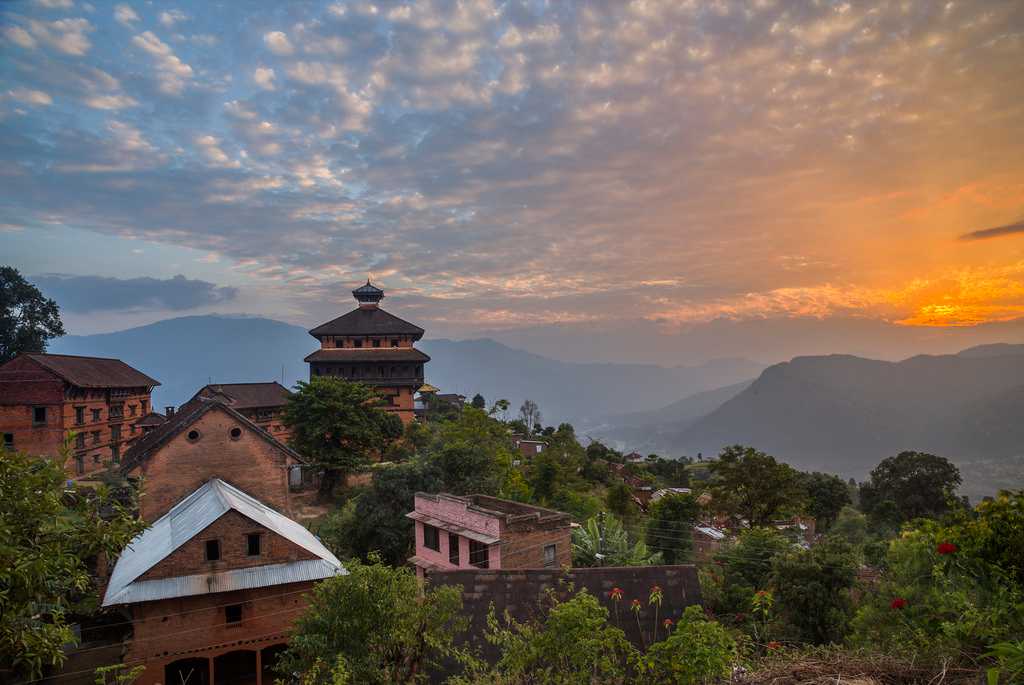Nuwakot, Nepal Overview
Stuck somewhere in between the 17th-century ambience and 21st-century facilities, Nuwakot is one of the most attractive destinations of Nepal. Albeit there are not many attractions to see, the Nuwakot Palace and its Durbar Square in itself are enough to draw the travellers who love to delve deep down the back alley of history. Before the offbeat destination it is now, Nuwakot used to be a place of utmost historical significance. Located around 75 kilometres west of Kathmandu, and above the confluence of the rivers Trisuli and Tandi, Nuwakot once used to be the historic capital town of the great kingdom of Kathmandu Valley, back when monarchy still existed.
Read More on Nuwakot
Grandeur of Nuwakot Durbar

The block fortress of Nuwakot perched atop a hill is the culminating point of it all. From afar, the landscape looks like a painting on canvas, where the brushes have etched an archaic edifice rising from a rugged highland covered with sparse forests. The road winding up to the fortress is dusty and offers a spectacular view of the valley. There is a barrack of Nepal army in front of the palace, maintaining the tradition of it being a strong holdfast. The Nuwakot fortress on the other side still stands with all its seven storeys of Newari architectural glory but with only a fraction of its strength. Time and natural calamities have weakened its roots and authorities have kept it supported with scaffoldings.
In front of the citadel, a beautifully curated garden marks the path to the old barracks and prison cells called Garad Ghar and the dance hall namely Ranga Mahal. They too are in a state of ruin, but the once-prominent magnificence can be observed from whatever is left. There are a couple of Vishnu shrines right in front of them.

Nearby stands the Bhairav Temple, a shrine of the God of Annihilation, the destructive manifestation of Shiva. The temple has similar red brick construction and a traditional Newari origin and is looked after by the local community. The smear marks od sindoor on the ancient carved door is a mark of how revered they consider the shrine to be. A bell hangs in front of it for the devotees to pay their respects. Beyond the temple, the edge of the land offers a breathtakingly beautiful view of the western part of the valley, covered in small toyland-ish villages and rice terraces.
There is another small shrine in the region, but it is not in use anymore. Right before the Nuwakot fortress there lies the Taleju Temple on a small hillock. Built in around 1564, this is the temple for goddess Taleju, whom the Malla dynasty followed. The local tradition of worshipping a young girl as goddess Kumari Devi comes from this deity - Kumari is considered as a reincarnation of Taleju.
History of Nuwakot

Nuwakot was a busy trading hub on the important Salt Trade route between India and Tibet. For a long period, it served as a vantage point for the lookout on the western entrance of the Valley. In the 18th century, many battles were fought between the Mallas and the Gorkhas, and sometimes the Chinese as well, over the ownership of the fort and the Nuwakot region. Finally, it rested in the hands of Gorkha ruler Prithvi Narayan Shah, who is also considered as the mastermind of modern, united Nepal. He is the one who expanded the original fort complex into a palace, added the amenities and made it what it is now.
Although crumbling from the weight of age and the added burden of the 2015 Nepal earthquake, the grandeur that it once had can still be witnessed in bits and pieces. The Nuwakot fort and palace is the principal attraction in the region. The etymology of the name comes from the belief that there are nine (nawa) hills in the region, each of which stands for a sacred site (kort), dedicated to a particular deity. Together they look after the valley, giving Nuwakot district the name City of Nine Hills.
The Eclectic Culture
Nepal is known for its diversity in ethnic cultures. Nuwakot is like a smaller Nepal within the country itself, with equal diversity in its cultural composition. Residents of Tamangs, Newars and Magars are common. It is them who maintain the agricultural fields that make the valley look so lush and green. In Nuwakot, they celebrate all the festivals that are celebrated in the more popular cities like Kathmandu. Gai Jatra and Indra Jatra are popular, and so is Kumari worship.
Attractions in Nuwakot
The whole place is dotted with modest food and accommodation places to cater to your needs. View of the Trishuli River is also quite a spectacular scene and worth capturing on this trip. The river passes right through the middle of Nuwakot. Further uphill, this same river turns into a raging spot for water rafting.

If you are looking for an even quieter mountain retreat at an even higher altitude and perfect sunrise view, Kakani is nearby. It is famous for strawberry farming and the memorial park for the victims of the 1992 Bangkok-Kathmandu plane crash.
Although Nuwakot is mostly considered as a preferred weekend tour out from Kathmandu, the root of the significance of the town and the fortress it is built around much deeper into the history of Nepal and its evolution. It is from this fortress the downfall of the Malla dynasty was planned by the Gorkhas, who later went on to build Nepal as we know it. A trip to this place might not be on the top of your bucket list, but you should be checking it off anyway.
Nepal Reviews

Have a Question on ?

experience.